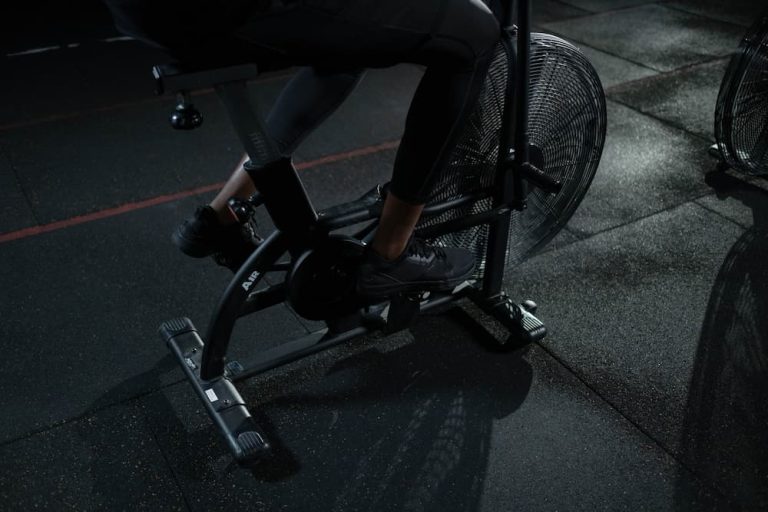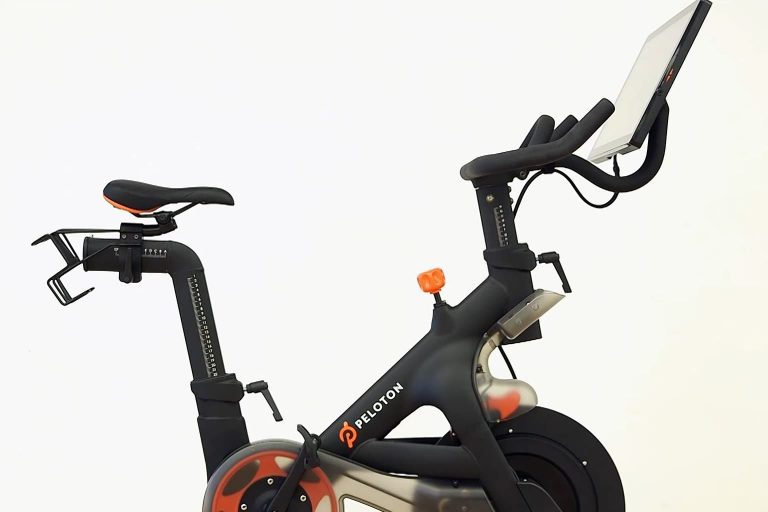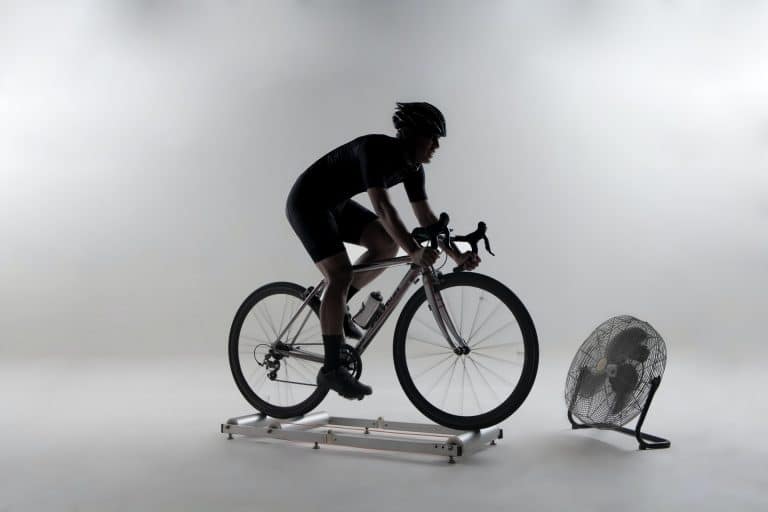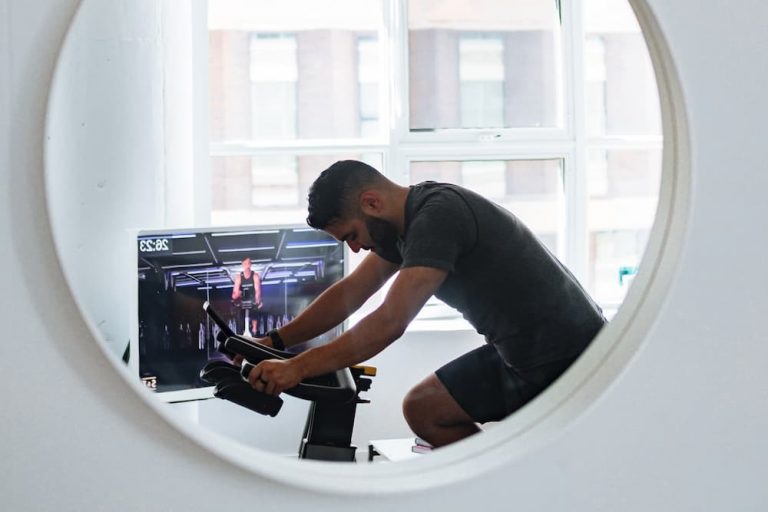Spin Bikes and Stationary Bike Trainers – The Comparison
Indoor cycling has taken the fitness world by storm, becoming a favored workout routine for many. Imagine this: over 10 million people now opt for this form of exercise annually, a testament to its growing popularity. At the heart of this fitness trend are two key pieces of equipment: spin bikes and stationary bike trainers. Both offer the convenience of training indoors, away from inclement weather and the hazards of outdoor cycling. They also present a low-impact option, ideal for those looking to prevent or recover from injuries.
Indoor cycling stands out for its versatility. Whether it’s a high-energy spin class or a focused training session, it caters to a wide range of fitness goals. This article delves into the specifics of spin bikes and stationary bike trainers, shedding light on their unique attributes. By understanding these differences, you can make an informed choice that aligns with your fitness objectives and lifestyle preferences.
Contents
What is a Spin Bike?

Spin bikes, with their sleek design, echo the feel of an actual bicycle. When you hop onto one, you’ll notice the handlebar position and body posture closely mimic that of a road bike. This similarity is no coincidence; spin bikes are crafted for cyclists who wish to bring their outdoor experience indoors. They’re not just about pedaling; they’re about fine-tuning your bike balance, posture, and pedal stroke. This makes them an invaluable tool for cyclists aiming to enhance their outdoor performance.
However, quality comes with a price. Generally, spin bikes are more expensive than their stationary bike trainer counterparts. This cost is justified by their robust build and the immersive cycling experience they offer. They’re built to endure and designed to replicate the nuances of outdoor cycling. The investment in a spin bike is not just monetary; it’s an investment in a more authentic cycling experience.
Spin bikes are particularly popular among those who crave the group dynamics of a spin class. The energy, the music, the collective effort – it all comes together on a spin bike. But they’re just as effective for solo riders looking for a rigorous workout at home.
What is a Stationary Bike Trainer?
Stationary bike trainers offer a unique approach to indoor cycling, distinct from spin bikes. The core appeal of these trainers lies in their ability to transform your existing road bike into an indoor cycling machine. This means you won’t find them equipped with their own set of wheels. Instead, they provide a stable, supportive platform where you can mount your bicycle. This adaptability is a significant draw, making them suitable for cyclists of varying heights and preferences.
One of the most attractive aspects of stationary bike trainers is their relative affordability compared to spin bikes. While they might offer a different ride feel than spin bikes, they excel in practicality and effectiveness. Their primary focus is not on simulating the exact outdoor cycling experience but on providing a reliable and convenient training setup at home.
For those who already own a road bike and seek to maintain their training regimen regardless of weather or outdoor conditions, stationary bike trainers are an ideal solution. They cater to cyclists preparing for races, looking to stay fit during the off-season, or simply wishing to integrate more indoor cycling into their routine. By using your own bike, you maintain a consistent feel between your indoor and outdoor rides, making the transition smoother and keeping your training regime consistent.
Understanding the Core Distinction between a spin bike and a stationary bike trainer
When choosing between a spin bike and a stationary bike trainer, it’s essential to grasp their fundamental differences.
Spin bikes are standalone exercise machines designed for indoor cycling. They’re built to simulate the experience of riding a road bike, featuring a fixed gear, adjustable resistance, and a design that promotes a cycling posture similar to outdoor bikes. Spin bikes are geared towards high-intensity workouts and are often found in gym settings for group classes.
In contrast, stationary bike trainers are not complete bikes on their own. Instead, they are devices that allow you to convert your existing road or mountain bike into an indoor cycling setup. This means you attach your bike to the trainer, which then provides resistance. This setup is ideal for cyclists who want to train on the same bike they use outdoors, ensuring a consistent riding experience.
The core distinction lies in their intended use and experience. Spin bikes offer a more gym-like, high-energy workout experience, often favored for spin classes and high-intensity training. Stationary bike trainers, on the other hand, are more about simulating the outdoor riding experience indoors. They’re suited for cyclists who want to train specifically on their own bike, focusing on endurance, strength, or specific cycling skills.
This understanding of their fundamental differences is crucial in guiding potential users towards the equipment that best suits their fitness goals and cycling preferences.
| Feature | Spin Bike | Stationary Bike Trainer |
|---|---|---|
| Average Price Range | $300 – $2000 | $50 – $500 |
| Typical Weight Capacity | Up to 350 lbs | Depends on the bike used |
| Average Dimensions | 40 x 20 x 50 inches (LxWxH) | 22 x 18 x 24 inches (LxWxH) |
| Primary Resistance Types | Magnetic, Direct Contact | Fluid, Magnetic, Air |
| Technology Integration | Varies (LCD Screens, Heart Rate Monitors) | Limited, relies on bike’s tech |
| Workout Focus | Cardio, Strength, Endurance | Road Cycling Simulation, Specific Training |
| Portability & Storage | Stationary, Requires Space | Compact, Easy to Store |
Resistance Mechanisms
The resistance mechanisms of spin bikes and stationary bike trainers vary significantly, influencing the overall cycling experience.
Spin bikes typically employ a heavy flywheel mechanism. This flywheel, often located at the front of the bike, creates resistance through its mass and motion. As you pedal, the flywheel spins, generating a smooth, continuous resistance that closely mimics the feel of cycling on a road. This kind of resistance is known for its responsiveness and consistency, providing a realistic biking experience. It’s particularly effective for high-intensity workouts and replicating the challenging aspects of outdoor cycling.
Stationary bike trainers, however, use different types of resistance systems: magnetic, fluid, or mechanical friction. Magnetic trainers create resistance through magnetic force, offering a quieter and smoother ride. Fluid trainers, using a liquid-based resistance system, are known for their progressive resistance – the harder you pedal, the more resistance you encounter. Mechanical friction trainers, the most traditional type, use a roller pressed against the bike’s wheel to create resistance. These varying systems offer different feels and levels of noise, with fluid and magnetic trainers generally being quieter than mechanical ones.
Each resistance type has its pros and cons. For instance, spin bikes with flywheels offer a high-energy, gym-like experience, ideal for those looking to push their limits. In contrast, stationary bike trainers with their diverse resistance options cater to a more customized workout, allowing cyclists to tailor their indoor training to mimic outdoor rides or specific training goals.
Ergonomics and Comfort
Ergonomics and comfort play a crucial role in choosing between a spin bike and a stationary bike trainer, as they directly impact your workout experience and efficiency.
Spin bikes are known for their design that promotes a more aggressive, aerodynamic cycling posture. They typically feature lower handlebars and a seat position that encourages a forward-leaning posture, much like road bikes. This design is conducive to high-intensity workouts and mimics the feel of racing or outdoor cycling. However, this position might not be comfortable for everyone, especially those with back issues or beginners not used to this posture.
Stationary bike trainers, in contrast, offer a different ergonomic experience. Since they utilize your own bike, the ergonomics largely depend on your bicycle’s setup. This means you can have a more upright, relaxed posture if your bike is set up that way, or a more aggressive posture if you prefer. The versatility in seating and handlebar positions can accommodate different body types and preferences. This adaptability is particularly beneficial for long training sessions, as it allows for adjustments to reduce fatigue and discomfort.
In terms of overall comfort, spin bikes might require a period of adjustment for those not used to a road bike’s posture. Meanwhile, stationary bike trainers offer the familiar comfort of your own bike, making them a preferred choice for those who prioritize comfort and a personalized setup.
Technology Integration
In today’s fitness world, technology integration is a key factor in indoor cycling equipment, and both spin bikes and stationary bike trainers offer unique technological features.
Spin bikes often come with built-in consoles that provide basic tracking capabilities, such as speed, distance, and calories burned. Some high-end models may also offer heart rate monitoring and connectivity with fitness apps, enhancing the workout experience. These features are particularly useful for those who like to monitor their performance and progress. Additionally, some spin bikes are designed to integrate with virtual cycling programs, offering an immersive experience that simulates different terrains and cycling routes.
Stationary bike trainers, on the other hand, often excel in technology integration. Many modern trainers are designed to connect seamlessly with smart devices and various cycling apps. This connectivity allows for detailed tracking of performance metrics like power output, cadence, and heart rate. Moreover, the interactive aspect of these trainers is a significant draw. They can simulate real-world conditions, adjust resistance automatically based on virtual terrains, and even allow you to compete in online races or follow structured workout programs. This level of interactivity makes stationary bike trainers highly appealing for those who enjoy data-driven training and a more interactive indoor cycling experience.
Both types of equipment offer technology features that cater to different preferences. Spin bikes provide a straightforward, gym-like experience with enough tech to keep track of your workout, while stationary bike trainers offer a more advanced, data-centric approach, ideal for cyclists who love technology and interactivity.
Adjustability
Adjustability is a significant factor in indoor cycling equipment, influencing both comfort and the effectiveness of workouts.
Stationary bike trainers stand out in terms of adjustability, primarily because they use your own bike. This means the fit and feel of the bike are exactly what you’re accustomed to. You have the freedom to adjust the seat height, handlebar position, and other aspects just as you would on your outdoor rides. However, one point to note is that if multiple people use the trainer with different bikes, you may need to install a different bike each time, which can be a bit of a hassle.
Spin bikes, while being standalone units, also offer a degree of adjustability. Most models allow you to adjust the seat height, handlebar height, and position to accommodate different rider sizes and preferences. This adjustability is crucial for ensuring a comfortable and effective workout, reducing the risk of injury and making the exercise more enjoyable. However, they might not offer the same level of personalized fit as your own bike on a stationary trainer, especially for those with specific ergonomic needs or preferences.
In essence, if you’re looking for a one-size-fits-all solution that can be easily adjusted to suit different users, spin bikes are a great option. On the other hand, if you prefer the personalized fit of your own bike and don’t mind the setup time, a stationary bike trainer would be more suitable.
Noise
Noise level is an important consideration for indoor cycling equipment, especially if you live in an apartment or shared space where keeping noise to a minimum is essential.
Spin bikes are known for their varying noise levels, largely depending on the type of resistance mechanism they use. Bikes with a chain-driven mechanism tend to be noisier compared to their belt-driven counterparts. The noise primarily comes from the spinning of the flywheel and the resistance mechanism in action. While not excessively loud, the sound can be noticeable, especially in a quiet room.
Stationary bike trainers, on the other hand, vary in noise production based on their resistance type. Wind trainers tend to be the noisiest, as they generate resistance through a fan. Magnetic and fluid trainers are generally quieter, with fluid trainers often being the preferred choice for a near-silent ride. The noise level also depends on the type of tire used on your bike and how well it interacts with the trainer. Smooth tires, for instance, tend to produce less noise compared to knobby, off-road tires.
In summary, if a quiet workout is a priority, a stationary bike trainer, especially a fluid or magnetic model, might be the better choice. Spin bikes, while not overly noisy, can generate more sound, which might be a consideration based on your living situation.
Suitability for Different Fitness Goals
When selecting between a spin bike and a stationary bike trainer, it’s crucial to consider your specific fitness goals, as each type caters to different training needs.
Spin bikes are ideal for those seeking high-intensity interval training (HIIT) and a cardio-focused workout. They are commonly used in spin classes, where the group setting and energetic atmosphere drive an intense workout session. The design of spin bikes, with their fixed gear and resistance adjustment, makes them suitable for quick, powerful bursts of energy, as well as sustained high-energy sessions. They’re excellent for building cardiovascular endurance, burning calories, and improving overall fitness levels.
Stationary bike trainers, in contrast, are better suited for cyclists with specific training goals, such as endurance building, power training, or preparing for cycling events. They allow for a more structured workout, where you can control every aspect of your training regime. Using your own bike, you can simulate the conditions of outdoor cycling, which is invaluable for serious cyclists or triathletes who want to maintain and improve their performance. Stationary trainers are also great for steady, consistent workouts, where you can focus on specific aspects of your cycling technique or endurance.
In essence, spin bikes are more about high-energy, cardio-focused workouts, making them a great choice for general fitness enthusiasts. Stationary bike trainers, on the other hand, offer a more tailored training experience, ideal for cyclists with specific performance goals or those who want to train in conditions that closely mimic outdoor cycling.
| Workout Type | Spin Bike | Stationary Bike Trainer |
|---|---|---|
| Endurance Training | Suitable, with resistance adjustment | Highly Suitable, mimics road cycling |
| Interval Training | Very Suitable, great for high intensity | Suitable, with variable resistance |
| Hill Climbs | Suitable, can increase resistance | Highly Suitable, realistic feel |
| Sprints | Highly Suitable, for intense bursts | Suitable, dependent on bike setup |
| Recovery Rides | Less Suitable, geared towards intensity | Highly Suitable, mimics gentle rides |
Cost
Cost is a significant factor in the decision-making process when choosing between a spin bike and a stationary bike trainer, as it impacts your investment in indoor cycling.
Spin bikes generally come with a higher price tag. The cost reflects their robust construction, advanced resistance mechanisms, and the immersive cycling experience they offer. High-end spin bikes can be quite an investment, often equipped with sophisticated technology, durable components, and a design that closely mimics the feel of outdoor cycling. However, there are also more budget-friendly options available that still offer a solid workout experience, albeit with fewer features and a simpler design.
Stationary bike trainers, in comparison, tend to be more affordable. The price varies depending on the type of resistance (magnetic, fluid, or mechanical) and technological features. Basic models can be quite economical, making them a viable option for those on a tighter budget. Even the more advanced trainers with smart features and interactive capabilities usually come at a lower cost than high-end spin bikes.
It’s important to consider not just the initial cost but also the value over time. Spin bikes, with their durability, can be a long-term investment in your fitness regimen. Stationary bike trainers, while initially more affordable, require you to already own a compatible bicycle, which adds to the overall cost if you don’t have one.
Space Requirements
When integrating indoor cycling equipment into your home, understanding the space requirements of spin bikes and stationary bike trainers is crucial.
Spin bikes typically have a larger footprint. They are standalone units that occupy a fixed amount of space, much like a traditional exercise bike. While their size can vary, most spin bikes are relatively bulky and require a dedicated space in your home. This space consideration is important, especially if you’re limited in terms of room or prefer a minimalist setup. However, their stationary nature means once you find a suitable spot, there’s no need for regular setup or teardown.
Stationary bike trainers, in contrast, offer more flexibility in terms of space. Many models can be folded or disassembled for compact storage, making them an ideal choice for smaller living spaces or multipurpose areas. When in use, you’ll need enough space to accommodate your bike and the trainer, but they can easily be put away when not needed. This portability and space efficiency make stationary bike trainers a popular choice for those who need to optimize their living area.
In summary, if space is a premium in your home, a stationary bike trainer might be the more practical choice. It provides the convenience of indoor cycling without permanently occupying significant room. On the other hand, if you have enough space and prefer a more permanent setup, a spin bike could be a suitable addition to your home gym.
Frequently Asked Questions
How does the intensity of workouts compare between spin bikes and stationary bike trainers?
When it comes to workout intensity, spin bikes and stationary bike trainers offer different experiences. Spin bikes are known for their high-energy, cardio-focused workouts. They’re often used in spin classes where you can experience a range of intensities, from endurance rides to high-intensity interval training. Stationary bike trainers, on the other hand, are more about mirroring the outdoor cycling experience. The intensity can vary widely depending on your training regimen. You can do anything from a gentle recovery ride to intense interval training, just like on an actual road.
Conclusion
In my journey through the realms of indoor cycling, I’ve come to realize the distinct roles that spin bikes and stationary bike trainers play. Each caters to specific aspects of a cyclist’s journey, be it the high-intensity thrill of a spin class or the disciplined rigor of race preparation.
| Equipment Type | Pros | Cons |
|---|---|---|
| Spin Bike | Robust and stable, Diverse workout options, Immersive experience, Ideal for high-intensity interval training, Adjustable for various fitness levels | Bulkier, generally higher cost, less realistic cycling feel compared to road biking, requires dedicated space |
| Stationary Bike Trainer | Realistic cycling feel, Uses your own bike for consistency, Space-efficient and portable, Ideal for specific cycling training like race preparation, Can be used in various weather conditions | Can be less stable than spin bikes, Limited resistance options compared to spin bikes, Dependent on having a compatible road bike, Can require additional accessories (like a front wheel block) |
Spin bikes, with their gym-like ambiance, offer an exhilarating workout mimicking the outdoor cycling experience. Their robust build and responsive flywheel mechanism make them an ideal choice for those seeking the thrill of high-energy sessions and looking to boost their cardiovascular fitness.
On the other hand, stationary bike trainers shine in their ability to transform an existing road bike into an indoor training powerhouse. This adaptability is a boon for cyclists focused on maintaining consistency in their training regime, especially when outdoor conditions are unfavorable. These trainers, with diverse resistance mechanisms and a quieter operation, are perfect for detailed, goal-oriented workouts. They allow cyclists to refine their skills, focusing on endurance and power, in the comfort of their own homes.
Technology integration in both spin bikes and stationary trainers has been a game changer, offering features that cater to varied preferences. While spin bikes provide essential workout data and an immersive virtual cycling experience, stationary trainers take it a notch higher with their advanced connectivity and interactive training programs. This technological edge empowers cyclists to track and enhance their performance with precision.
When it comes to personal comfort and workout efficiency, both types of equipment have their merits. Spin bikes, designed for a more aggressive cycling posture, might require an adjustment period for some. Conversely, stationary bike trainers offer the familiarity of one’s own bike, allowing for a more customized fit and feel.
The decision between a spin bike and a stationary bike trainer also hinges on factors like cost, space requirements, and noise levels. Spin bikes, generally more expensive, demand a dedicated space but offer durability and a comprehensive workout experience. Stationary trainers are more budget-friendly and space-efficient, ideal for those with limited space or varying living arrangements.






